
If you’ve ever seen the television show Mr Selfridge you know that retail used to be an entirely different business than it is today. Harry Selfridge was seen as a vulgarian when he decided to open a retail store in London and allow buyers to see the goods before they were prepared to make a purchase.
Selfridge caused a retail revolution by understanding customer behavior. He allowed the goods to be put on display and also trained his retail staff on the art of finding the suitable item for any given buyer, thus beginning the first true democratisation of the retail experience.
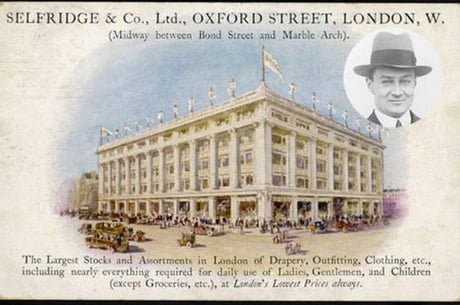
[Selfridge & Co. Postcard]
While the idea of keeping goods under a table is ludicrous to us today, we’ve seen an equally large shift in how retail works and the role of the sales associate. Since then much has changed, and only companies that can see which way the business is going will be able to thrive in the future.
But as much that has changed since the early 1900’s, the pace of change has only accelerated in the last 30 years – especially in the role of the sales associate.
The 80’s: Retail Companies Go From Monolith to Personal
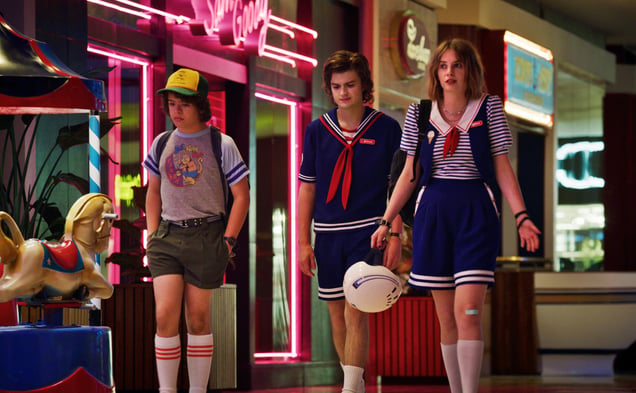
[Image: From left, Gaten Matarazzo, Joe Keery, and Maya Hawke in Season 3 of "Stranger Things" which borrowed heavily from Fast Times at Ridgemont High]
The 1980s were about conspicuous spending and cachet but also focused a lot on the large, department store experience. A good example of this is how many movies in the 1980s involved large department stores.
Going to a place like Macy’s was seen as a way to get a lot of shopping done at once. Customers put trust into large department stores. Even if an item could be purchased cheaper across town, you were already at the department store, so you were more likely to make the purchase. People used to buy televisions and computers at Sears.
There was another strategic advantage for a customer in the Department Store experience: consistency. You could feel safe knowing that the sales staff were all trained the same way, and were all able to deliver a specific kind of customer care. This was comforting to the person making several medium and large purchases.
The 1980s were part of the era of the Monolith in retail. Employees were given specific instructions on how to dress, down to the type of hosiery and jewelry in some cases, and how to wear their hair and makeup. Training was administered according to one prototype. There wasn’t much room for improvisation. Keeping the standard was important. Sometimes, this came at the detriment to the customer. It was seen as the best way to communicate the brand at the point of sale.
It largely worked. It wasn’t until more competition entered markets and stores specializing in one type of good (for instance electronics, cosmetic, or shoe retailers) began to challenge the authority of Department Stores that we began to see a loosening of the rules.
Department stores had to adapt to the “eager specialist” model from the “monolith” model it had been employing.
Department stores began to ramp up loyalty programs, and engage more with customers in a service model that was more focused on the customer’s wants than how the monolith could fit into the customer’s stated need. More choices were made available across departments at this time in order to further suit customers that didn’t fit a certain box. It was the beginning of the larger trend of personalization in retail.
The 90’s: Stores Move From Approachable to On Demand
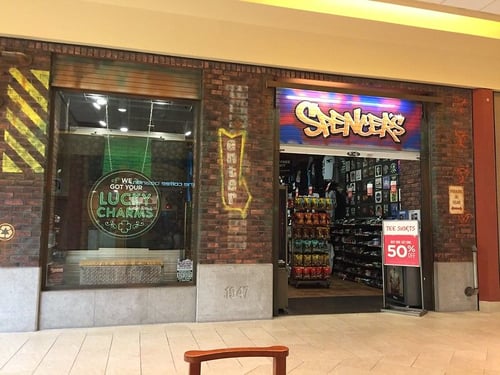
[Spencers, Flikr]
The 1990s were the last great heyday of the mall experience. Before e-commerce changed the game for consumers, the mall was still the place where most people went when they needed to shop.
The era ushered in a lot of very specific types of stores: No longer were there “teen clothing stores” there were now “teen pajama and underwear stores.” There were stores dedicated to movie posters. There were stores that only sold various products to scent your home.
On the other side of this was the rise of the specialized Box Store. The idea behind this concept was to provide a seemingly limitless supply of options to a customer for whatever need in niche verticals like office supplies, housewares, and home improvement.
Both of these approaches served the same trend: being an exhaustive, on-demand place to serve customers’ needs. Yes, the candle store wasn’t going to be able to capture sales away from the stationary store that also sold candles, but it was the only place you could get that one kind of French candle, so it captured a certain kind of clientele. The specialty box store was able to scoop up customers who weren’t happy with the selection of 3 doorknobs at their local hardware store by supplying 30 options, and while you were there, you might be enticed to get some paint, caulk, and lighting fixtures.
Sales associates were encouraged to look and be themselves more in these environments. Often there were core pieces of a “uniform” but hair, makeup, and other items were left up to the associate. In box stores, associates were often encouraged to personalize smocks or aprons that were parts of their uniforms with buttons, stickers, and other 'flair' they chose themselves.
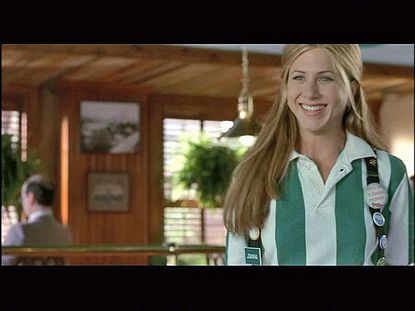 [Jennifer Aniston showing off her flair in "Office Space". 20th Century Fox]
[Jennifer Aniston showing off her flair in "Office Space". 20th Century Fox]
Sales associates also had to have an exhaustive amount of knowledge about hundreds of SKUs to hold up the brand promise that their store was the only place to go to get exactly what the customer really needed. They were the font of product knowledge and people often revisited specific sales associates they had good relationships with on subsequent visits.
These stores succeeded by providing the most tempting array of options for consumers to choose from, and gave them empowerment in knowing they could choose from 30 items and not just the 3 they were accustomed to. The 1990s began the era of on-demand retail.
The 00’s: Retailers Transition From “Available to Answer” to Proactive
In the 2000s, commerce began to hit its stride. Now, customers were able to get ratings and reviews on products right on the page they could purchase the product from. There were entire sites devoted to just reviewing retail purchases that shoppers could visit to arm themselves with information. If a certain type of vacuum tended to fail at 6 months, you could find that out within seconds of looking at it online.
Price comparison also became an obsession for consumers. If you can spend 10 minutes of your time instead of hours in a car to find a retailer that could save you hundreds on major purchases, why wouldn’t you?
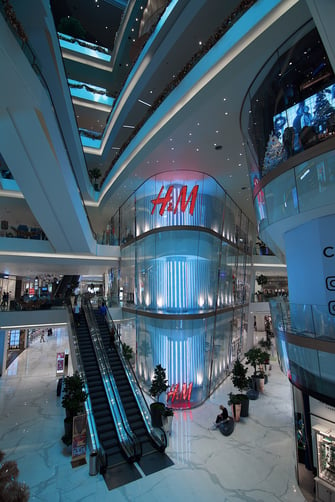
[Photo by Psk Slayer on Unsplash]
The challenge for bricks and mortar stores and their online counterparts became how to be proactive toward consumers to get them to spend money in their stores instead of at a random online retailer?
The answer was two-fold: Become proactive, and deliver on trust. Retailers put money and effort into making their stores more welcoming. They put sales associates into the aisles to proactively talk to customers and provide product knowledge, and made sales associates on demand (Lowe’s famously had ‘doorbells’ in their aisles to summon sales associates) The Apple Store took this one step further by putting sales associates on the floor to encourage customers to play with their product offerings while they explained the benefits and comparison between models in a proactive, but non intrusive way.
The era of “me retail,” (retail centered around the individual) began to take shape. In-store, customers were encouraged at the point of sale to sign up for newsletters that would gain more and more intelligence as they were deployed, allowing retailers to customize these touches and bring more customers in-store.
Companies like Target used their loyalty programs to proactively suggest items in their customized newsletters to customers in order to increase purchase frequency at point of sale. Customers got used to receiving tailored offers.
What’s Next
Tailored offers have their limits. If you shop for gifts on Amazon, and then log back in, you can see the suggested “items for you” are not “for you” as much as “similar to things you just bought for your uncle.” There are limits to what you can do with data outside of a human touch.
“The next great leap in retail will be in-store clienteling.”
That’s why companies like Salesfloor are investing in what we call in-store clienteling. The evolving role of an associate is an empowered associate, no longer limited to sell and connect with customers in-store. They can connect with their customers online, via email, over chat and through social media any time of the day or day of the week. In addition to this, associates now have a lot of data about customers they can leverage, coupled with point of sale data that show trends like “customers who bought A will be happy with B” or “customers who buy C will return in a month to buy D” but data is nothing without insights to go with it.
Customer preferences and behaviors aren’t generally as cut and dried as we’d like them to be. A person might be primed for a sale based on data, but when they enter a store, they might not be in the right frame of mind, or may regret a “reckless” purchase later, and return it. The beauty of in-store clienteling is that it allows the associate to reconnect with the customer when the timing is better. If the customer isn’t in the buying mood in-store today, they can come back to the interaction a few days later online via the associate or local store’s Salesfoor storefront via URL given to the customer to ‘think about it’.
All of this points at the future of the sales associate being a combination of sales, stylist AND therapist.
Retail is a living, breathing industry and it will always need to reinvent itself to meet the needs of the customer. The ability to marry good data with highly trained people poses the best possible future for retail success.
To get articles like this delivered right to your inbox, subscribe to Salesfloor's newsletter and stay up to date and in the know.



